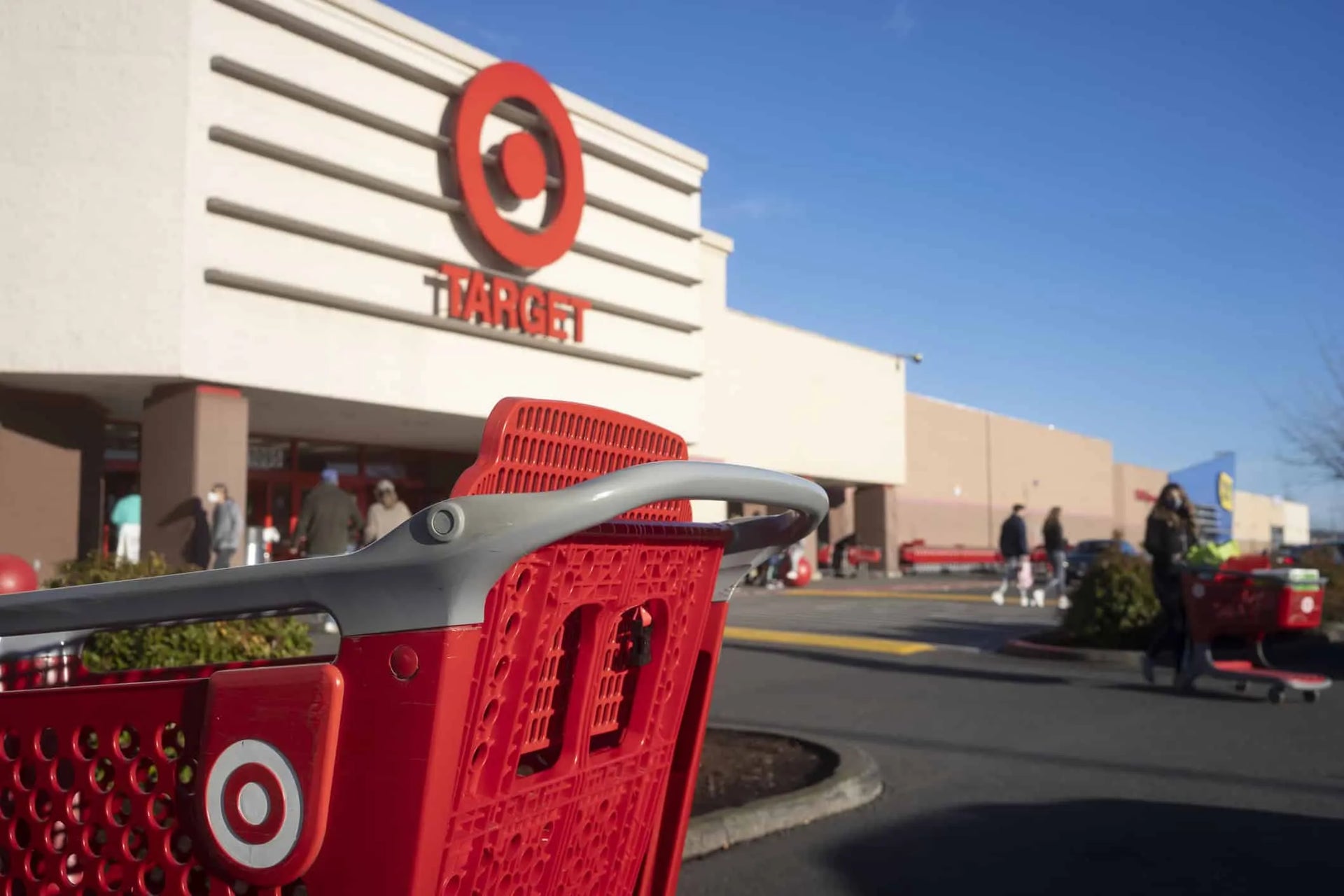
Target Restricts Price-Matching Policy: Implications for Consumers and Retailers
Table of Contents
- Key Highlights:
- Introduction:
- The New Price-Matching Landscape at Target
- Industry Trends: A Move Away from Price Matching
- The Consumer Reaction: What Does It Mean for Shoppers?
- Retailers Holding the Line: Who Still Offers Price Matching?
- The Future of Price Matching in Retail
- Navigating Price Changes: Strategies for Consumers
- The Broader Economic Context: Tariffs and Supply Chain Issues
- The Role of E-commerce in Shaping Retail Strategies
- Conclusion: Embracing Change in the Retail Sector
- FAQ
Key Highlights:
- Target has significantly limited its price-matching policy, applicable only for items found at its own brick-and-mortar stores or website within two weeks of purchase.
- The new policy excludes price matching with Amazon and Walmart, reflecting a broader trend among retailers moving away from extensive price-matching practices.
- As some retailers tighten their pricing strategies, others like Best Buy and Home Depot maintain price-matching policies, albeit with strict conditions.
Introduction:
In a significant shift that reflects changing dynamics in the retail landscape, Target has announced a restrictive update to its price-matching policy. Beginning July 28, customers will only be able to match prices for identical items purchased at Target’s own stores or website, a marked departure from the previous policy that allowed matches against competitors like Amazon and Walmart. This decision not only highlights Target's strategic response to its operational challenges but also aligns with a broader industry trend where many retailers are tightening their price-matching offerings. As consumers navigate this evolving retail environment, understanding the implications of these changes becomes crucial.
The New Price-Matching Landscape at Target
Target's decision to limit its price-matching policy is indicative of a significant shift in retail strategies. Previously, the retailer offered a more liberal approach, allowing customers to match prices against both Amazon and Walmart. However, as of late July 2025, that flexibility will no longer apply. This change positions Target alongside other major retailers that have similarly curtailed their price-matching commitments.
The new policy means that if a customer finds an identical item at a lower price at Target’s physical stores or its online platform within two weeks of their purchase, they may request a price adjustment. Notably, this move excludes any price matching against competitor prices from Amazon and Walmart, which had been a longstanding feature of Target's customer service.
Industry Trends: A Move Away from Price Matching
Target's policy update is not an isolated incident. The retail sector has seen a gradual shift away from robust price-matching policies, a trend that many analysts attribute to increased competition from e-commerce giants and changing consumer expectations. For instance, Amazon has never maintained a price-matching policy, relying instead on its reputation for low prices and vast selection to attract customers. Meanwhile, Walmart significantly reduced the scope of its price-matching policy in 2019, allowing for matches only against prices advertised on its own website.
As Target navigates a challenging operational environment characterized by a reported 3.8% decline in sales among stores open for at least a year, the decision to tighten price-matching policies can be understood in this context. The retailer is grappling with rising tariffs and various economic pressures that have forced it to reconsider its pricing strategies.
The Consumer Reaction: What Does It Mean for Shoppers?
For consumers, the implications of Target's new price-matching policy are multifaceted. While the policy may streamline operations for the retailer and align it with industry standards, it also limits options for price-sensitive shoppers. The removal of price-matching against Amazon and Walmart means that consumers may need to be more vigilant in comparing prices across platforms, particularly for high-demand products.
Shoppers who previously relied on Target’s price-matching to secure competitive pricing may need to adjust their purchasing habits. For example, if a customer finds a popular electronics item cheaper on Amazon, they will no longer have the option to request a price match at Target. This shift could influence purchasing decisions, pushing consumers to explore alternative retailers that still offer competitive pricing and price-matching policies.
Retailers Holding the Line: Who Still Offers Price Matching?
Despite the trend towards limiting price-matching policies, several retailers continue to uphold their commitments, albeit with specific conditions. Best Buy, for instance, maintains a price-matching policy that allows for price reductions on identical items, provided they are available at a qualifying competitor's store or website. However, Best Buy also has a list of exclusions, meaning that not all products are eligible for price matching.
Home Depot, Lowe’s, and several technology companies like Dell, HP, Lenovo, and major e-commerce platforms such as eBay continue to offer price-matching policies, but they often come with significant stipulations. For instance, Home Depot's policy requires that the competing product be in stock and immediately available at the competitor's location. These restrictions can create a barrier for consumers who wish to take advantage of price-matching.
The Future of Price Matching in Retail
The future of price matching in retail appears uncertain as more companies reevaluate their pricing strategies. As operational costs rise and competition intensifies, retailers may feel pressured to adopt more stringent measures regarding price matching. This can lead to a fragmented landscape where some companies maintain robust price-matching policies while others opt for minimal options.
Experts suggest that retailers need to focus on enhancing their overall value proposition beyond just pricing. This could include improving customer service, offering loyalty rewards, or enhancing the shopping experience both online and in-store. As prices fluctuate and consumer expectations evolve, retailers may find that they need to innovate their strategies to retain and attract customers.
Navigating Price Changes: Strategies for Consumers
With the tightening of price-matching policies, consumers must adapt their shopping strategies to ensure they are getting the best value for their purchases. Here are some practical approaches to consider:
- Leverage Comparison Tools: Utilize price comparison websites or browser extensions that track prices across multiple retailers. This can help identify the best deals available without relying solely on price matching.
- Stay Informed on Sales: Follow retailers on social media or subscribe to newsletters to stay updated on sales, promotions, and discount events. Many retailers offer exclusive deals to subscribers, which can offset the lack of price matching.
- Consider Loyalty Programs: Join loyalty programs offered by retailers. These programs often provide exclusive discounts, rewards points, or early access to sales events, which can be more beneficial than price matching.
- Shop Smart: Plan purchases around known sales events such as Black Friday, Cyber Monday, and seasonal clearance events. Being strategic about when to shop can yield better prices than relying on price-matching.
- Evaluate Total Value: Assess the total value offered by a retailer, including customer service, product availability, and return policies. Sometimes, the overall shopping experience may outweigh a lower price elsewhere.
The Broader Economic Context: Tariffs and Supply Chain Issues
The recent changes in pricing strategies among major retailers like Target can also be linked to broader economic factors. Tariffs imposed on imported goods have raised costs for retailers, forcing them to pass these expenses onto consumers or tighten their pricing policies. Additionally, ongoing supply chain disruptions have led to inventory challenges, making it harder for retailers to maintain competitive pricing.
Retailers are being forced to navigate a complex landscape where consumer expectations for low prices clash with rising operational costs. In this environment, price-matching policies may become less sustainable for many businesses, leading to the current trend of restrictions and eliminations.
The Role of E-commerce in Shaping Retail Strategies
As e-commerce continues to dominate the retail space, traditional brick-and-mortar retailers face increasing pressure to innovate and adapt. The rise of online shopping has fundamentally changed how consumers approach purchasing decisions, often favoring convenience and speed over price matching.
Retailers like Target must find ways to enhance their digital offerings to compete effectively against e-commerce giants like Amazon. This could involve expanding their online inventory, improving website functionality, or offering fast delivery options to meet consumer expectations.
Conclusion: Embracing Change in the Retail Sector
The restriction of Target's price-matching policy is a significant indicator of changing dynamics within the retail sector. As the industry grapples with economic pressures, shifting consumer behaviors, and increased competition, retailers are rethinking how they approach pricing strategies.
While some consumers may experience frustration with the new limitations, it is essential to recognize that the retail landscape is continuously evolving. By adapting their purchasing strategies and remaining informed about available options, consumers can still navigate these changes effectively.
FAQ
1. Why did Target change its price-matching policy? Target revised its price-matching policy to align with broader trends in the retail industry and to address operational challenges, including declining sales and rising costs.
2. What items are eligible for price matching under Target’s new policy? Under the new policy, only identical items purchased from Target’s stores or website can be matched within two weeks of purchase.
3. Which retailers still offer price matching? Retailers like Best Buy, Home Depot, and eBay continue to offer price matching, though often with specific conditions and restrictions.
4. How can consumers find the best prices now that price matching is limited? Consumers can utilize price comparison tools, stay informed on sales, consider loyalty programs, and plan purchases around known discount events to secure the best deals.
5. What economic factors are influencing changes in retail pricing policies? Rising tariffs, supply chain disruptions, and increasing operational costs are significant factors impacting retailers' pricing strategies and leading to the tightening of price-matching policies.
قوة التجارة الإلكترونية الخاصة بك مع رؤانا وتحديثاتنا الأسبوعية!
ابقَ متوافِقًا مع ما يحدث في عالم التجارة
عنوان البريد الإلكتروني
مختارة خصيصًا لك


23 July 2025 / Blog
The Evolution of the Consumer Buying Process: Adapting to a Digital-First Era
اقرأ المزيد
23 July 2025 / Blog


